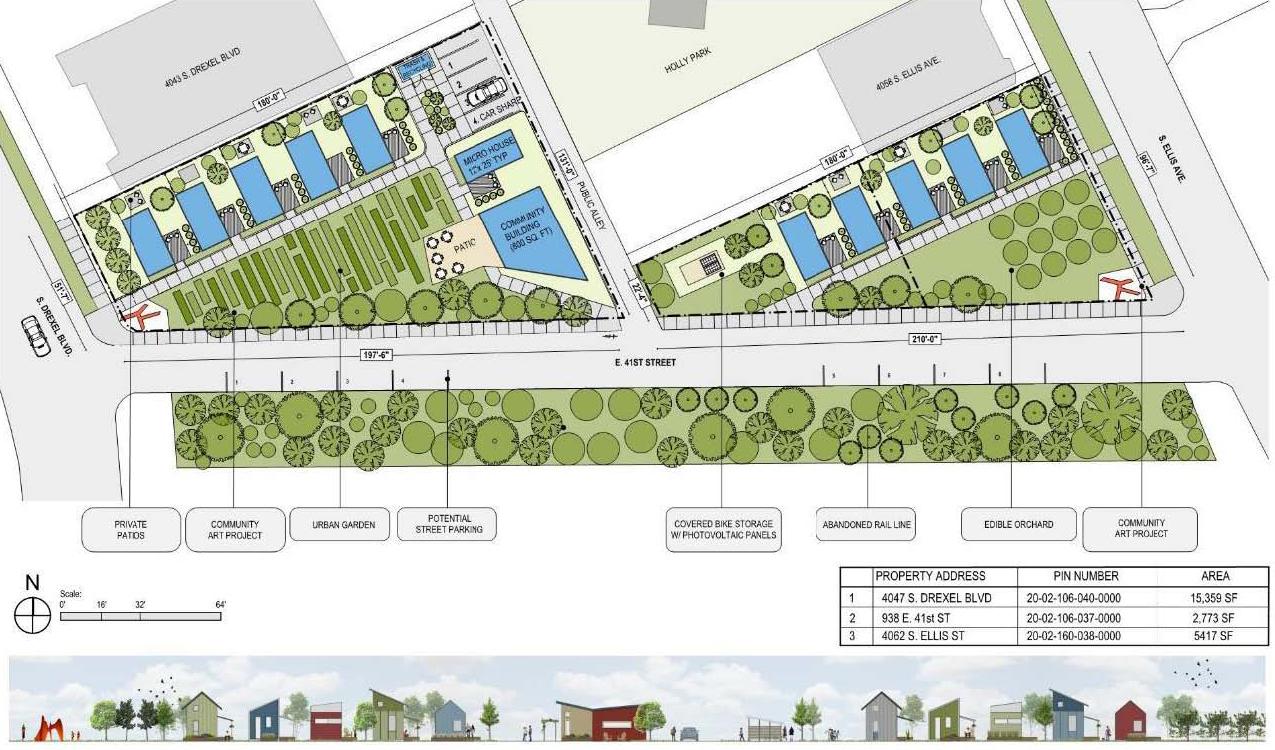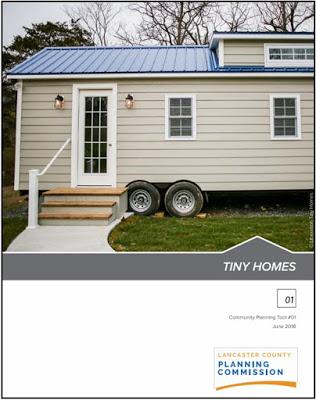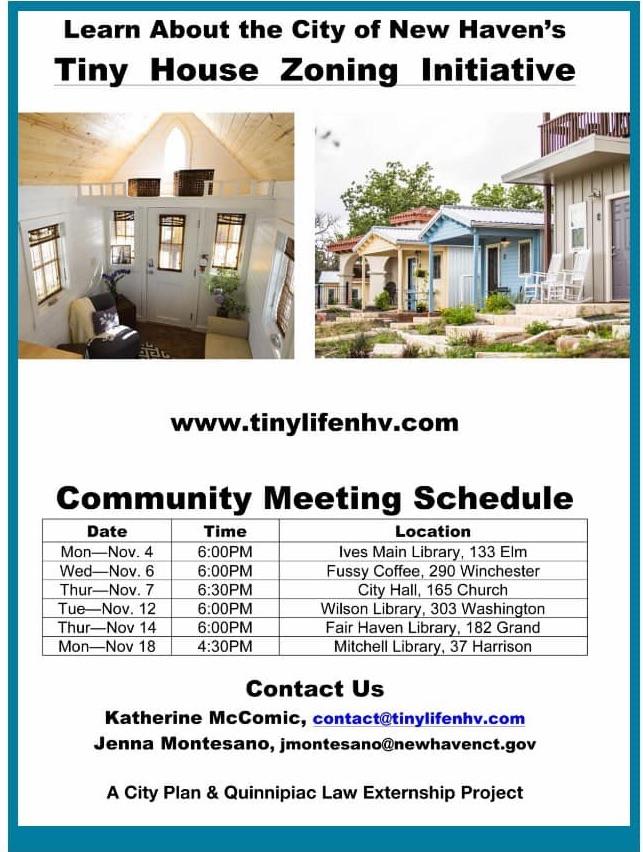In a world where space is at a premium and the call for sustainable living grows louder, tiny house communities are emerging as a bold reimagining of home. These compact, thoughtfully designed spaces promise freedom, affordability, and a closer connection to community-and yet, behind their quaint facades lies a complex web of zoning laws and legal hurdles. Navigating these regulations can be as intricate as the craftsmanship of the houses themselves, shaping where and how these miniature marvels can flourish. This article delves into the legal landscape surrounding tiny house communities, exploring the challenges and opportunities that come with building a life in small spaces governed by big rules.
Table of Contents
- Understanding Zoning Challenges for Tiny House Communities
- Navigating Building Codes and Safety Regulations
- Strategies for Securing Legal Approval and Permits
- Balancing Community Needs with Municipal Requirements
- Best Practices for Advocating Tiny House Friendly Policies
- Frequently Asked Questions
- In Retrospect

Understanding Zoning Challenges for Tiny House Communities
One of the most significant hurdles tiny house communities face is navigating complex zoning laws designed around traditional housing models. Many municipalities have strict requirements regarding minimum square footage, permanent foundations, and utility hookups, which often exclude tiny homes from being classified as legal dwellings. This creates a fundamental tension between innovative living solutions and existing regulatory frameworks, making it essential for tiny house advocates to engage with local zoning boards early in the planning process.
Understanding these challenges means recognizing the diversity of zoning categories-residential, commercial, agricultural-and how each impacts tiny house placement. For instance, some rural areas might offer leniency under agricultural zoning, allowing tiny homes as accessory dwellings, while urban zones may restrict them outright. It’s important to identify which zones permit flexibility and to consider applying for variances or conditional use permits where necessary.
- Minimum lot size requirements can limit the number of tiny houses on a parcel.
- Building codes often mandate permanent foundations and specific construction standards.
- Utility connections must meet local health and safety regulations, impacting feasibility.
- Parking and access rules influence how communities lay out pathways and shared spaces.
| Zoning Factor | Challenge | Potential Solution |
|---|---|---|
| Minimum Size | Excludes tiny homes under 400 sq ft | Apply for variance or cluster zoning |
| Foundation Rules | Requires permanent structures | Advocate for flexible foundation standards |
| Utility Access | Strict hookup regulations | Use off-grid or shared utilities |
| Parking | Limits on on-site vehicle parking | Design communal parking areas |
Navigating Building Codes and Safety Regulations
When planning a tiny house community, understanding the intricate web of building codes and safety regulations is crucial. These rules are designed to ensure the well-being of residents while maintaining structural integrity and environmental standards. However, because tiny houses often blur the lines between traditional homes, RVs, and accessory dwelling units, their classification under local laws can be ambiguous, leading to potential roadblocks.
Common areas of concern include:
- Minimum square footage requirements: Many jurisdictions have a minimum size for dwellings, which tiny houses may not meet.
- Foundation and anchoring standards: Safety codes often specify how homes must be anchored to withstand weather events.
- Electrical and plumbing regulations: Compliance with national and local codes ensures safe and sanitary living conditions.
- Fire safety protocols: This includes smoke detectors, fire-resistant materials, and proper egress.
To illustrate the variance in regulations, consider the following simplified comparison:
| Jurisdiction | Minimum Dwelling Size | Foundation Required | Fire Safety Measures |
|---|---|---|---|
| City A | 400 sq ft | Permanent | Smoke alarms, fire extinguisher |
| County B | 250 sq ft | Anchored trailer allowed | Smoke alarms only |
| State C | No minimum | Permanent or anchored | Comprehensive fire suppression system |
Collaborating with local building officials and fire marshals early in the planning process can help clarify these requirements and identify acceptable compromises. Additionally, engaging with architects and builders experienced in tiny homes can streamline compliance, ensuring safety without sacrificing the unique charm and sustainability of these compact dwellings.
Strategies for Securing Legal Approval and Permits
Before breaking ground on your tiny house community, navigating the labyrinth of legal requirements is crucial. Start by conducting thorough research on local zoning ordinances and building codes. Many municipalities have specific stipulations for minimum lot sizes, utility hookups, and dwelling classifications that can directly affect your project’s feasibility. Engaging with local planning departments early on can save you from costly setbacks down the line.
Securing permits often involves more than just paperwork; it requires building relationships. Attend community meetings and public hearings to present your vision, demonstrating how your project aligns with neighborhood goals and sustainability efforts. Garnering support from neighbors and local officials can be a game-changer when your application reaches decision-makers.
Key tactics to streamline your approval process include:
- Hiring a land use attorney or consultant familiar with tiny house regulations.
- Preparing detailed site plans and environmental impact assessments.
- Exploring variance or conditional use permits if standard zoning doesn’t fit your plans.
- Documenting community benefits such as affordable housing or green initiatives.
| Permit Type | Purpose | Typical Timeline | Cost Range |
|---|---|---|---|
| Site Development Permit | Approval for land alterations and infrastructure | 4-8 weeks | $500 – $2,000 |
| Building Permit | Authorization to construct dwellings | 2-6 weeks | $1,000 – $5,000 |
| Variance Request | Exceptions to zoning rules | 6-12 weeks | $1,000 – $3,000 |
| Environmental Review | Assessment of ecological impact | 4-10 weeks | $1,500 – $6,000 |

Balancing Community Needs with Municipal Requirements
Creating a harmonious living environment within tiny house communities requires a delicate negotiation between the desires of residents and the stipulations set by local governments. While municipalities prioritize safety, infrastructure, and long-term urban planning, community members often seek flexibility, affordability, and a sense of autonomy. Achieving this balance means engaging in open dialogue and finding innovative solutions that respect both perspectives.
Key factors influencing this balance include:
- Zoning adaptations: Municipalities may need to revise existing zoning codes to accommodate smaller footprints without compromising neighborhood character.
- Infrastructure considerations: Ensuring access to utilities, waste management, and emergency services while maintaining cost-effectiveness.
- Community input: Incorporating feedback from residents to shape policies that reflect their needs and concerns.
For instance, some cities have introduced specialized zoning overlays that allow tiny homes in designated districts, balancing density with open space preservation. Others require that tiny houses meet certain building codes or be placed on permanent foundations, ensuring safety while enabling innovative housing options.
| Community Need | Municipal Requirement | Potential Compromise |
|---|---|---|
| Affordable housing options | Minimum lot sizes | Clustered tiny home plots |
| Community green spaces | Density limits | Shared communal areas |
| Autonomy in design | Building code compliance | Flexible yet safe design standards |
Ultimately, success lies in collaboration. When communities and municipalities work together, tiny house developments can flourish as models of sustainable, inclusive living that respect both individual aspirations and public welfare.
Best Practices for Advocating Tiny House Friendly Policies
Building support for tiny house initiatives requires a strategic approach grounded in community engagement and education. Start by connecting with local stakeholders-city planners, neighborhood associations, and potential allies such as environmental groups. Hosting informative workshops or open forums where residents can learn about the benefits of tiny homes often helps dispel myths and build grassroots momentum.
When advocating for policy changes, framing your message around economic and environmental benefits resonates well with decision-makers. Emphasize how tiny houses can alleviate affordable housing shortages, reduce urban sprawl, and promote sustainable living. Supplement your arguments with data and case studies from municipalities that have successfully integrated tiny home communities.
Another vital tactic is to propose clear, actionable recommendations that address common zoning obstacles. This includes advocating for:
- Flexible lot sizes and setbacks
- Allowances for accessory dwelling units (ADUs)
- Streamlined permitting processes
- Inclusion of tiny homes in mixed-use zoning districts
Presenting a concise comparison of zoning allowances in different areas can be a powerful visual aid. Below is an example of how you might organize this information for local officials:
| City | Tiny Home Zoning Allowed | Permit Process | Minimum Lot Size |
|---|---|---|---|
| Springfield | Yes, in ADU zones | Fast-track (30 days) | 1,500 sq ft |
| Rivertown | No | Standard (60 days) | 3,000 sq ft |
| Greendale | Yes, mixed-use zones | Expedited (45 days) | 1,200 sq ft |
Frequently Asked Questions
Q&A: Tiny House Communities – Navigating Zoning Laws and Legalities
Q1: What exactly are tiny house communities?
A1: Tiny house communities are neighborhoods or clusters where multiple tiny homes-usually under 400 square feet-are situated together. These communities promote minimalist living, sustainability, and often foster a strong sense of community among residents.
Q2: Why do zoning laws matter for tiny house communities?
A2: Zoning laws regulate land use and determine what types of structures can be built or placed in specific areas. Since tiny houses challenge traditional housing norms, they often run into zoning restrictions that affect where and how they can be legally situated.
Q3: What are the common zoning obstacles tiny house communities face?
A3: Common hurdles include minimum square footage requirements, prohibitions on accessory dwelling units (ADUs), restrictions on mobile homes or RVs, and regulations requiring permanent foundations. Many areas also have rules about utilities and septic systems that can complicate tiny house setups.
Q4: Are tiny houses considered legal dwellings everywhere?
A4: Not universally. The legality depends heavily on local regulations. Some municipalities have embraced tiny houses, updating codes and zoning to accommodate them, while others still consider them non-compliant or even illegal.
Q5: How can tiny house communities work within zoning frameworks?
A5: Communities can pursue options like locating in zones designated for manufactured housing, applying for variances or special use permits, or developing in areas where tiny houses are explicitly allowed, such as certain rural or mixed-use zones. Some communities also use cooperative land ownership or lease land to navigate legal constraints.
Q6: What role do building codes play in tiny house legality?
A6: Building codes set standards for safety, sanitation, and construction quality. Tiny houses must meet these codes to be deemed habitable. However, because codes are often designed for conventional homes, tiny house builders sometimes face challenges getting approval, especially if their homes are mobile or lack permanent foundations.
Q7: Are there any emerging legal trends supporting tiny house communities?
A7: Yes. Some cities are pioneering tiny house-friendly policies, such as relaxing minimum size requirements, legalizing tiny house villages for the homeless, or creating tiny home zones. These shifts reflect growing recognition of tiny houses as viable housing solutions amid affordability and environmental concerns.
Q8: What should prospective tiny house community developers keep in mind legally?
A8: Due diligence is critical. Developers should research local zoning and building regulations, engage with city planners early, consider long-term utility and waste management solutions, and possibly consult legal experts. Building community support and demonstrating benefits like affordability and sustainability can also smooth the approval process.
Q9: Can tiny house communities be a solution to housing crises?
A9: Potentially, yes. Their affordability and smaller footprint can address shortages and reduce environmental impacts. However, legal acceptance is key. Without supportive zoning and code frameworks, scaling tiny house communities remains challenging.
Q10: Where can I find resources or assistance for starting a tiny house community legally?
A10: Organizations like the Tiny Home Industry Association, local housing advocacy groups, and municipal planning departments are valuable resources. Legal clinics specializing in land use and housing law can also provide guidance tailored to specific locales.
In Retrospect
As the tiny house movement continues to reshape how we think about home and community, navigating the maze of zoning laws and legalities remains a crucial step for anyone ready to downsize or build anew. While the challenges can seem daunting, they also open doors to innovation, collaboration, and the reimagining of neighborhood norms. Whether you’re dreaming of a quaint cluster of tiny homes nestled in a rural setting or a vibrant urban village, understanding the legal landscape empowers you to turn that vision into reality-one small space at a time.

